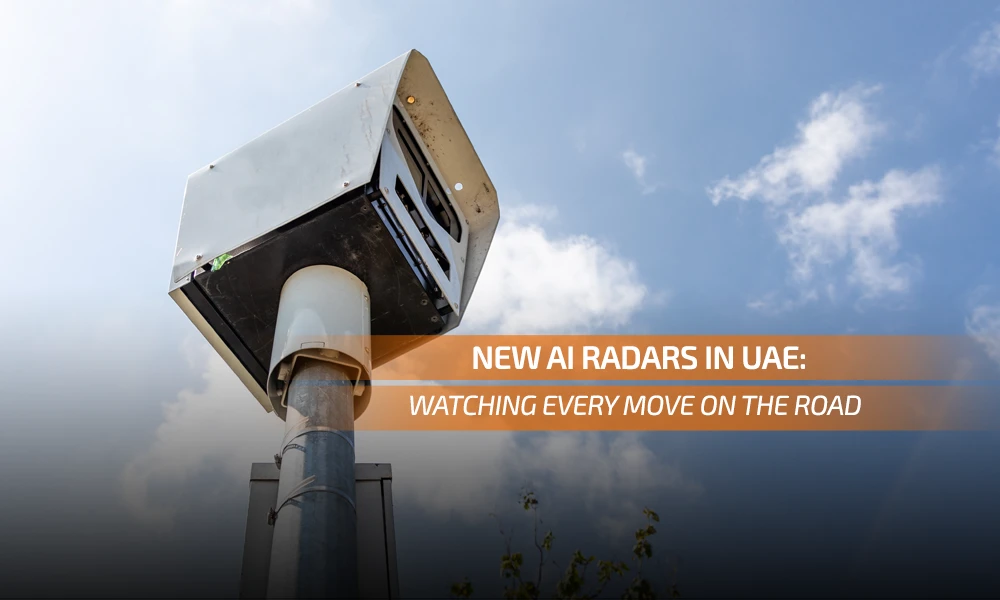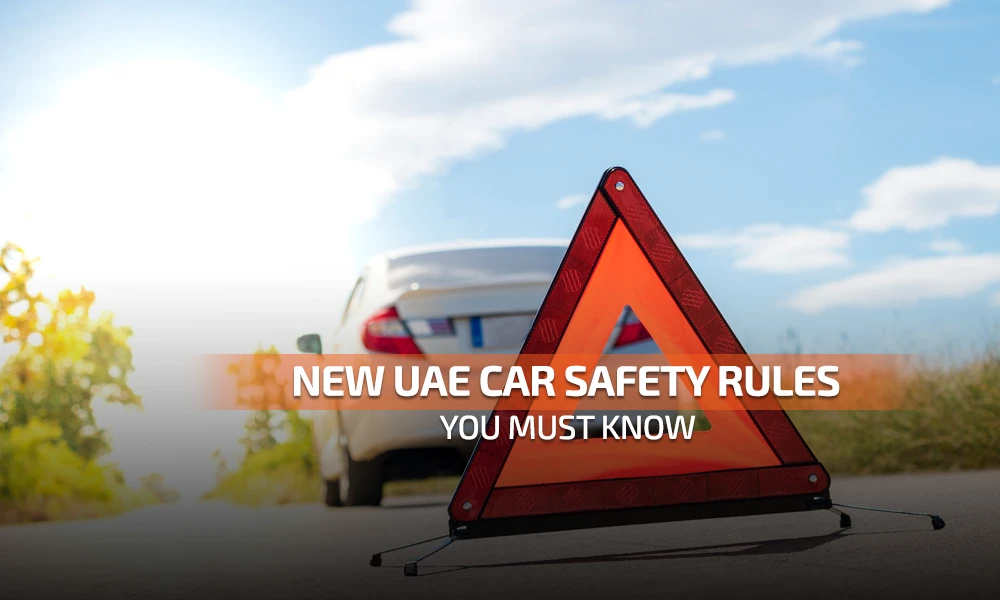The UAE is known for its futuristic ambitions—glimmering skyscrapers, autonomous taxis, flying cars, and now, a revolutionary transformation in road safety. Say hello to the AI-powered radars quietly watching every move on the road.
In a bold step toward zero road fatalities and smarter traffic enforcement, Dubai and other Emirates are rolling out AI-powered radars to enforce traffic rules with unmatched precision. These cutting-edge systems go far beyond traditional speed cameras—they’re intelligent, multi-tasking, and always watching.
Let’s dive into how this technology is reshaping mobility, what it means for drivers, and what you need to know to stay safe and fine-free.
AI-Powered Radars: The Future of Road Safety Has Arrived
Gone are the days when radar systems were limited to snapping speeders. The AI-powered radars introduced in the UAE come with futuristic features like:
- Facial recognition
- Seat belt detection
- Mobile phone usage monitoring
- Tailgating identification
- Real-time analytics
- Vehicle classification by type and plate
These radars are equipped with deep learning algorithms and 360-degree vision. They can detect multiple violations in a single frame—whether you’re speeding, texting, or tailgating. The goal? Full compliance with traffic rules and a dramatic drop in road-related deaths.
Related Blog: Dubai AI Radar Traffic Offences, Fines & Penalties – JobxDubai
Why the UAE Is Leading the AI Traffic Revolution
Dubai’s Roads and Transport Authority (RTA) has been continuously upgrading its traffic infrastructure. With the introduction of AI-powered radars, the Emirates have taken a leap ahead of global counterparts.
These radars align with the UAE’s broader goals of:
- Vision Zero – aiming for zero road deaths by 2030
- Smart City Initiatives – integrating AI in public infrastructure
- Traffic Decongestion – through real-time traffic flow monitoring
- Environmental Sustainability – by reducing accident-related roadblocks and emissions
Related Blog: Dubai Unveils Innovative AI Radar System – Travel and Tour World
Violations the AI Radars Can Detect
The scope of detection by these smart radars is vast. Here are some violations that could get you in trouble if you’re not careful:
Speeding
Traditional speed traps are now obsolete. AI radars use automatic number plate recognition (ANPR) combined with radar and LiDAR sensors for ultra-accurate speed monitoring.
Mobile Usage
Caught using your phone while driving? These radars will see it—day or night.
Seat Belt Violations
Even if you’re wearing a dark shirt or driving at night, the AI system will detect the absence of a seatbelt.
Pedestrian Prioritization
Failing to give way to pedestrians at crossings is now monitored and penalized.
Traffic Signal Violations
AI radars catch red-light jumpers, wrong-way driving, and even unsafe U-turns.
Tailgating
If you’re driving too close to the car ahead, expect a fine. The radar measures safe braking distance in real time.
How Will This Impact Drivers in the UAE?
More Fines—but Also More Awareness
While it’s true that more violations will be caught, this system aims to change driver behavior through consistent enforcement. In the long run, these fines act as a deterrent and elevate road discipline.
Enhanced Public Safety
Better enforcement of traffic rules leads to fewer accidents, less congestion, and safer roads for all—drivers, pedestrians, and cyclists.
Real-time Traffic Management
Data from AI-powered radars is fed into smart traffic systems that automatically adjust signals to ease traffic jams. That means a smoother commute across the city.
Related Read: Driving in Dubai Traffic? Here’s How to Stay Alert and Safe
What Should Drivers Do to Stay Compliant?
Here are a few actionable tips to avoid being flagged by these smart systems:
- Obey all posted speed limits—even short bursts of speeding can trigger a fine.
- Keep your phone down—use hands-free options if absolutely necessary.
- Always buckle up, even for short trips.
- Follow lane discipline—don’t swerve or overtake dangerously.
- Avoid tailgating—maintain a safe following distance.
- Stay updated on new road openings and traffic diversions.
Related Read: New RTA Road Openings and Traffic Decongestion in Dubai
Fines and Penalties Under AI Monitoring
If you’re wondering how much these violations will cost you, here’s a quick look:
| Violation | Fine (AED) | Black Points |
| Using mobile phone while driving | 800 | 4 |
| Not wearing a seat belt | 400 | 4 |
| Tailgating | 400 | 4 |
| Speeding (over limit) | 300–3,000 | Up to 23 |
| Jumping red light | 1,000 | 12 |
The fines are steep—but avoidable. And with AI-powered radars constantly monitoring, there’s little room for error.
AI and the Bigger Picture: Smart Mobility in the UAE
These intelligent radars are part of a broader mobility strategy which includes:
- Autonomous taxis and buses
- Connected road infrastructure
- Smart intersections with adaptive signal timing
- AI-driven emergency response systems
They contribute to a seamless, safe, and sustainable transport network that supports the UAE’s vision of becoming a global leader in smart mobility.
A Word to the Wise
Whether you’re a long-time UAE resident or a visitor, it’s time to adapt. The era of manual policing is fading. With AI-powered radars watching silently from every intersection, only strict adherence to traffic rules will keep you off the fine list.
The smartest move? Drive safely—not because you’re being watched, but because it’s the right thing to do.
Key Takeaways:
- The UAE has rolled out advanced AI-powered radars to monitor and enforce traffic rules.
- These radars detect speeding, mobile usage, tailgating, and more.
- Violations come with heavy fines and black points.
- The initiative aligns with the UAE’s zero-fatality vision and smart city goals.
- Staying compliant is the best way to avoid fines and ensure safety on the roads.
FAQs: AI-Powered Radars in the UAE
1. What are AI-powered radars?
AI-powered radars are smart traffic systems that detect multiple violations like speeding, mobile usage, and tailgating using artificial intelligence.
2. Where are these radars installed in the UAE?
They are being installed across major intersections, highways, and high-risk zones in Dubai and other Emirates.
3. What violations can AI radars detect?
They detect speeding, using a mobile phone while driving, not wearing a seat belt, tailgating, and jumping red lights.
4. Will I be fined automatically if caught by AI radar?
Yes, the system is automated and issues fines directly based on real-time violation detection.
5. Can AI radars detect violations at night or in poor visibility?
Absolutely. These radars work 24/7 using infrared and smart vision to monitor all conditions.
6. How do AI-powered radars help improve traffic rules compliance?
By enforcing penalties instantly and accurately, they encourage safer and more responsible driving behavior.
7. Are these radars part of a larger traffic safety plan?
Yes, they support the UAE’s goal of zero road fatalities and smarter city mobility.
8. How can I avoid getting fined by AI radars?
Simple—follow traffic rules, drive within speed limits, stay alert, and don’t use your phone while driving.
Final Thoughts: The Eyes That Never Blink
Dubai’s latest radar technology may feel intrusive to some, but it’s a powerful tool for public good. Every violation caught is one potential accident prevented. The goal isn’t punishment, but prevention.
The AI-powered radars don’t miss a thing. And as the UAE sets the bar high in traffic safety, these innovations are poised to make roads smarter, safer, and smoother for everyone.
Drive alert. Drive aware. Drive smart.







